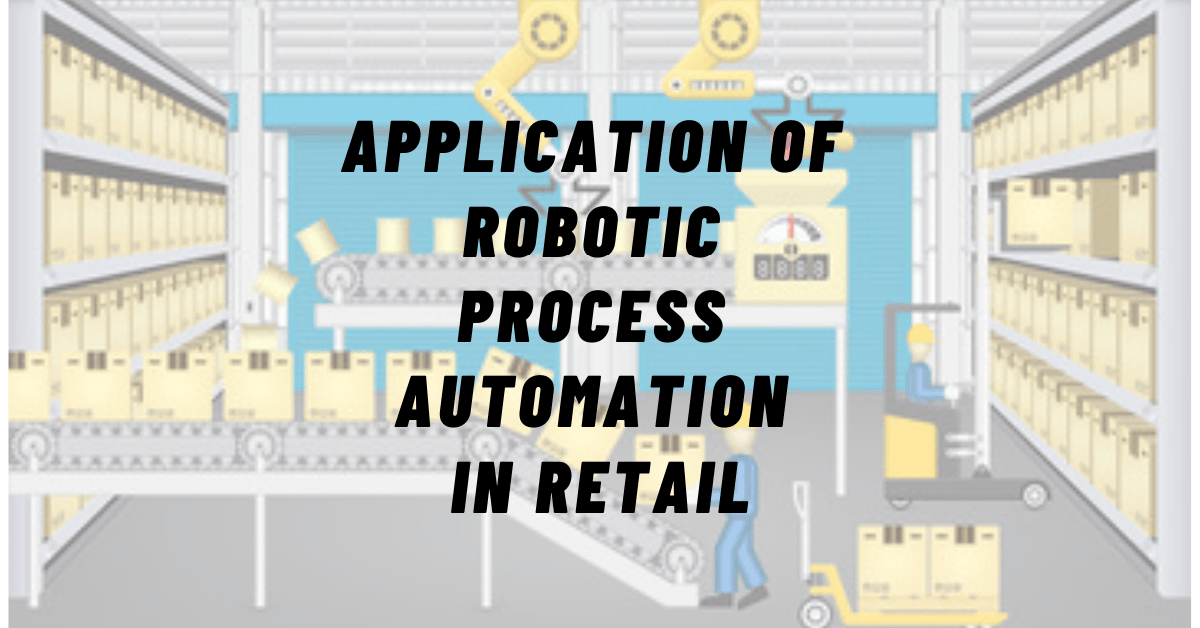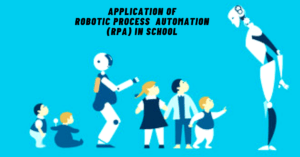In a fast-paced world, there is no time to indulge in any activity that takes up your time. Luckily, technology blesses us on a day-to-day basis with newer advances. It aids us in working efficiently by getting more tasks done. Sooner or later, almost every business sector will soon turn towards this great advancement. This will allow enhancement in their business practices with the aims of working better and faster.
Due to everything moving at such a faster pace, the retail industry is lagging. The traditional methods of retailing are tedious, long, and demanding, making it a slow-paced business despite its rapid growth. However, in this article, we will see that how this process can be fast-forwarded by utilizing numerous Applications of Robotic Process Automation (RPA) in retail is going to be the ideal solution.
What is RPA?
It is important to fully understand what RPA exactly is. It is a technology that allows businesses and individuals to create an “automated system” that does repetitive, boring, and regularly performed tasks in digital systems to efficiently execute business processes. These systems can perform all these tasks just like humans to complete any work. They can interpret information, communicate, and trigger responses with all systems to perform repetitive tasks.
RPA is not a physical robot
There is also a great misconception about RPA. Due to the word ‘Robotic’, people often confused it with some kind of physically moving machine. But the fact is that RPA does not relate to it in any sense. RPA does not involve a shiny metallic robot. It is more like a software tool that simply automates some manual tasks
Might be of your interest: -> Is IPA different from RPA? -> Applications of RPA in school
RPA in Retail Industry
Here are some common Applications of RPA in the retail industry:
In-Store Planning and Inventory Check using RPA in Retail
Traditionally, in-store planning involves the store’s layout is based on customer preferences and requirements. For example, if a customer is shopping from a store, the in-store planning should be such that the customer can pick up all relevant products and make a purchase. This way, the time of the customer is not wasted and the selling point is at a high. However, the issue with this method is that this method can lead to errors.
The major error is that sales data cannot efficiently be analyzed by analysts. They need help from technology, offered by RPA. It can effectively help analyze high-selling products so you can organize your store in a way to maximize profits and met customer expectations.
Use of RPA in Launching New Products
The introduction of new products and extensions into new product lines requires a large investment and transparency along with all departments of a firm. To make the process better, the help of a detailed analysis report can ease the introduction of new products/product lines. RPA helps retailers to modify prices, stocks, and production all of which keep customer preferences in mind.
RPA & Trade Promotions
Marketing and promotions are art when it comes to the retail industry. Yet again, doing it manually becomes expensive and extensive for the retailer. The reason is that before any trade promotions thorough analysis and data research needs to be done to create effective promotions. By using RPA, the task of an employee plugging data into spreadsheets will take lesser time and make the task more efficient.
Product categorization
The supply & demand of a product varies from market to market based on their regional and demographic constituents. So to keep manage the supply-demand chain Retailers must focus on categorizing products based on both global and local stock-keeping units. RPA can improve categorization, and research backs this fact. A study by the Everest Group says that automation can help you improve product categorization accuracy by 98.5%.
Use of RPA in Retail Resource Management
Resource management or Enterprise Resource Planning (ERP) includes activities like billing, price changes, account payables, receivables, and more. Automation of these activities has the potential to reduce human efforts to a great extent. RPA-powered ERP when integrated with warehouses will seamlessly enhance the efficiency of your inventory management.
Sales Analysis
Sales analysis is a crucial practice to understand customer preferences and behavior to create promotions, new products, and more as per customer needs. For all retailers, it is necessary to perform a thorough sales analysis to maximize their reach and to stay relevant. In this case, RPA can with sales and business analysis by moving faster through reports and data that give an insight into customer preferences and behaviors. Moreover, these bots inform about forecasting and do predictive analysis, making any businesses’ future optimal.
Customer Support
When it comes to customer support, RPA is ideal. E-commerce retailers can use RPA to their full advantage by rightfully guiding customers with the help of robots, all the time. Whether it is order payments or delivery, bots can send updates to customers so they are aware of the entire process. The great part about this is that these bots can answer queries and give feedback to the team.
Final Thoughts
For ultimate success, retailers should opt for RPA as it is more efficient and sustainable. While optimizing ideal results repetitive tasks can be eliminated when it comes to customers and their preferences. All in all, RPA is the future retail industry, RPA is the future of all businesses.




